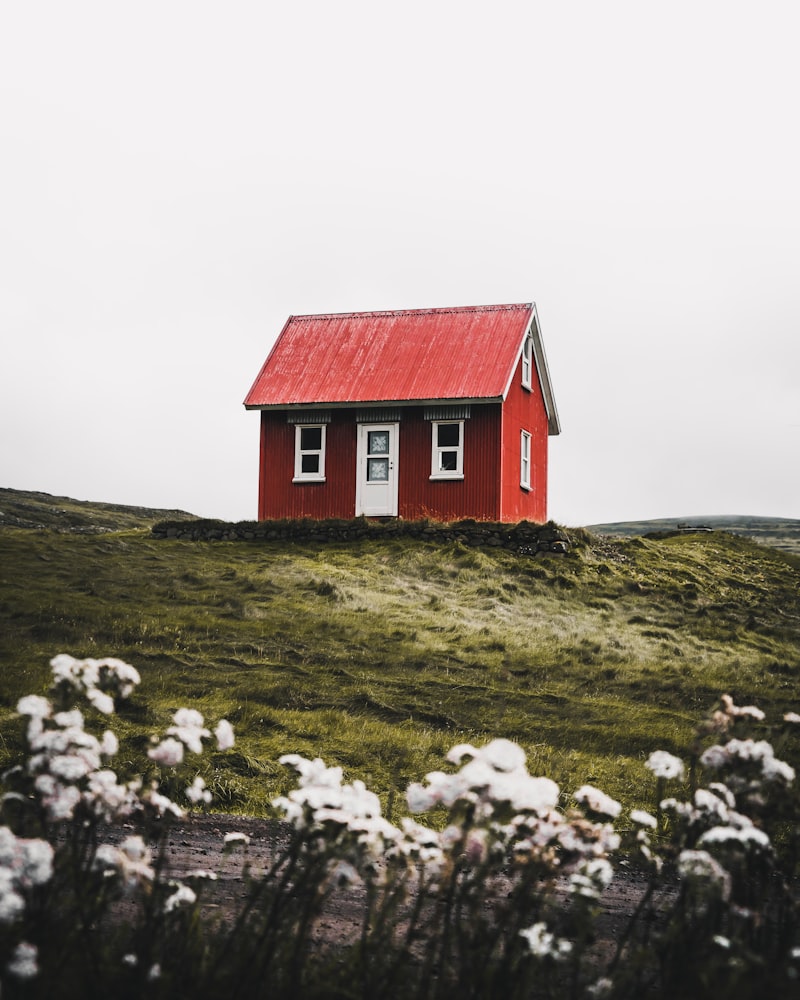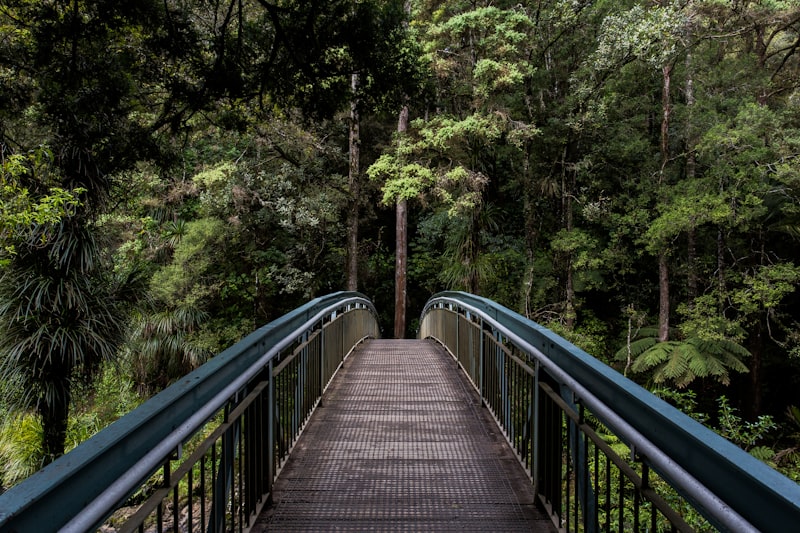Have you ever marveled at how architecture seamlessly integrates with its natural surroundings? Nature has always been a profound muse for architects around the world, inspiring designs that harmonize with the environment rather than imposing upon it.
In architecture, the influence of nature goes beyond aesthetics; it’s about functionality and sustainability. Take the iconic Sydney Opera House, for instance. Its sail-like structure mimics the billowing sails of boats on the harbor, blending with the waterfront landscape. This not only enhances its visual appeal but also reflects its maritime location.
Moreover, nature’s forms and patterns often dictate architectural principles. The honeycomb structure, found in beehives, has inspired architects to create efficient, modular building designs. These designs maximize space and energy, much like the natural efficiency of a beehive.
Consider also the use of natural materials like wood and stone in architecture. These materials not only evoke a sense of warmth and timelessness but also reduce the carbon footprint of buildings. Architects today are increasingly incorporating biophilic design principles, which aim to reconnect people with the natural environment through architecture. This approach includes features like green roofs, which not only enhance biodiversity but also improve air quality and insulation.
The relationship between nature and architecture is a symbiotic one. Architects continually draw inspiration from the beauty, functionality, and sustainability inherent in nature’s designs. By integrating these elements into their creations, they not only create visually stunning buildings but also contribute to a more sustainable future.
Biophilic Design: Blending Nature and Modern Architecture
Biophilic design is more than just a trend—it’s a philosophy that harmonizes nature with contemporary architecture, creating spaces that are not only visually appealing but also enhance our well-being. Imagine walking into a building where lush greenery cascades down walls, natural light floods through expansive windows, and the sound of trickling water echoes softly in the background. This is the essence of biophilic design, a concept that seeks to reconnect urban dwellers with the natural world.
At its core, biophilic design aims to mimic the patterns, forms, and elements of nature within built environments. It goes beyond adding a few potted plants; it integrates natural materials like wood and stone, incorporates organic shapes and textures, and maximizes views of outdoor landscapes. These elements are strategically integrated to evoke a sense of calm, reduce stress levels, and boost productivity.
Imagine an office space where employees work beneath a canopy of greenery, feeling inspired and rejuvenated throughout the day. Biophilic design recognizes that our innate connection to nature is fundamental to our health and happiness. It encourages architects and designers to create spaces that nurture this connection, fostering environments where people thrive.
In today’s fast-paced world, biophilic design offers a sanctuary—a place where nature isn’t just a backdrop but an integral part of our daily lives. It’s about more than aesthetics; it’s about creating sustainable, resilient spaces that prioritize human well-being. By blending nature with modern architecture, biophilic design sets a new standard for how we interact with our surroundings, paving the way for healthier, more vibrant communities.
This article aims to capture the essence of biophilic design in a conversational tone, emphasizing its benefits and relevance in contemporary architecture. Let me know if there’s anything you’d like to adjust or expand upon!
From Forests to Facades: The Evolution of Eco-Friendly Buildings
Imagine a world where buildings not only serve our needs but also give back to the environment. This vision is becoming a reality with the rise of eco-friendly architecture, where sustainability meets innovation. From Forests to Facades: The Evolution of Eco-Friendly Buildings showcases a remarkable shift in construction practices, emphasizing harmony with nature.
Gone are the days when buildings were seen merely as structures. Today, architects and engineers are harnessing the power of nature-inspired design to create structures that blend seamlessly into their surroundings. Using materials sourced from sustainable forests and recycled products, these buildings reduce their carbon footprint while offering stunning aesthetics.
The journey begins with the careful selection of materials. Instead of traditional concrete and steel, eco-friendly buildings use timber and bamboo, which are renewable and have lower environmental impacts. These materials not only sequester carbon but also provide a natural warmth and beauty to the architecture.
Moreover, the evolution extends beyond materials to energy efficiency. Eco-friendly buildings incorporate cutting-edge technologies like solar panels, rainwater harvesting systems, and natural ventilation to minimize energy consumption and maximize environmental benefits. They are not just places to live or work but are ecosystems in themselves, supporting biodiversity and promoting healthier environments.

In essence, the shift towards eco-friendly buildings signifies a profound change in how we perceive and interact with our built environment. It’s a testament to human ingenuity and our commitment to preserving the planet for future generations. As we continue to innovate and refine these practices, the future of architecture looks brighter and greener than ever before.
Inspired by Nature: Architectural Wonders Around the Globe
Have you ever marveled at how human creativity can blend seamlessly with the natural world? Across the globe, architects have drawn inspiration from nature’s beauty to create stunning architectural marvels that leave us in awe. From towering skyscrapers mimicking the grace of trees to buildings designed to resemble natural formations, these structures stand as testaments to the ingenuity of their creators.
In Singapore, the Gardens by the Bay is a prime example of architectural brilliance inspired by nature. The Supertree Grove, with its towering tree-like structures covered in plants, not only serves as an iconic landmark but also functions as vertical gardens, harnessing solar energy and collecting rainwater—a true fusion of technology and nature.
Moving to Spain, the Sagrada Família in Barcelona is a masterpiece envisioned by the renowned architect Antoni Gaudí. Its organic shapes and intricate facades are inspired by natural forms like tree branches and honeycombs. Over a century in the making, this basilica continues to capture the imagination with its surreal beauty and innovative design principles.
In Dubai, the Burj Khalifa stands tall as the world’s tallest building, soaring like a gleaming needle into the sky. Its sleek, modern design was inspired by the shape of desert flowers and incorporates elements of Islamic architecture, blending cultural heritage with cutting-edge engineering.
Closer to home, the Sydney Opera House in Australia is not just a performing arts center but a UNESCO World Heritage site celebrated for its distinctive sail-like shells. Designed by Danish architect Jørn Utzon, its form echoes the sails of boats navigating the harbor—a poetic tribute to Sydney’s maritime history and natural surroundings.

These architectural wonders remind us of the boundless creativity sparked by the natural world. They challenge our perceptions of what is possible, pushing the boundaries of design and engineering. Each structure tells a story of harmonizing with nature, whether through sustainable practices, biomimicry, or simply capturing the essence of landscapes in concrete and steel.
As we continue to evolve, these architectural wonders stand as reminders of our deep connection to the Earth and the endless possibilities when we draw inspiration from the world around us.
Sustainable Cities: Harnessing Nature’s Blueprint in Urban Design
Imagine a city where buildings are not just structures but ecosystems themselves, where green spaces and biodiversity flourish amidst concrete and steel. This concept of harnessing nature’s blueprint in urban design involves incorporating natural elements like green roofs, vertical gardens, and urban forests into the fabric of the city.

One of the key aspects of sustainable urban design is the use of green infrastructure. This includes parks, gardens, and wetlands that mimic natural ecosystems. These green spaces help absorb carbon dioxide, mitigate urban heat island effects, and improve air and water quality. They also provide habitats for wildlife and create recreational areas for residents to enjoy.
Another innovative approach is designing buildings that are energy-efficient and environmentally friendly. This can include using sustainable materials, installing solar panels, and implementing rainwater harvesting systems. By reducing energy consumption and minimizing waste, cities can significantly lower their carbon footprint and promote a more sustainable way of living.
Cities around the world are already adopting these principles in their urban planning. From Copenhagen’s emphasis on cycling infrastructure and green roofs to Singapore’s integration of vertical gardens and solar panels, there are numerous examples of how cities can embrace nature-inspired solutions to build a sustainable future.
Ultimately, the concept of harnessing nature’s blueprint in urban design is about creating harmonious spaces where humans and nature coexist in balance. It’s about rethinking how we build and inhabit our cities to ensure that future generations can thrive in healthy and vibrant urban environments.
Biomorphic Structures: Embracing Organic Forms in Architecture
One of the key principles behind biomorphic architecture is its ability to evoke a sense of awe and wonder. By integrating organic shapes and flowing lines, architects create spaces that feel alive, almost as if they have grown rather than being built. This approach not only captivates the eye but also resonates with our innate connection to nature, offering a refreshing departure from the rigid geometries of traditional buildings.
Moreover, these structures often prioritize sustainability. Inspired by the efficiency of natural systems, biomorphic architecture incorporates strategies like natural ventilation, passive solar heating, and rainwater harvesting. This eco-conscious approach not only reduces environmental impact but also promotes a healthier, more harmonious relationship between buildings and their surroundings.
In terms of functionality, biomorphic structures are as practical as they are visually striking. The fluid forms can optimize space, creating dynamic interiors that enhance human experience. Whether it’s a museum that mirrors the contours of rolling hills or a residential complex designed to blend seamlessly with a forested landscape, these buildings redefine how we interact with our built environment.
Ultimately, biomorphic architecture challenges conventional norms, pushing boundaries to create spaces that inspire, innovate, and harmonize with nature. As our understanding of sustainable design evolves, these organic forms serve as a testament to the limitless possibilities when art, science, and nature converge in architectural brilliance.
Frequently Asked Questions
What are some examples of architectural designs inspired by nature?
Discover architectural designs inspired by nature, blending organic forms with modern functionality. Examples include biomimetic structures mimicking shells, trees, and honeycombs, integrating sustainable practices for innovative building solutions.
How can architects incorporate natural elements into urban settings?
Learn how architects can seamlessly integrate natural elements such as green roofs, vertical gardens, and open atriums into urban environments to enhance sustainability, biodiversity, and quality of life.
What are the environmental benefits of nature-inspired architecture?
Discover how nature-inspired architecture offers environmental benefits such as energy efficiency, reduced carbon footprint, and enhanced biodiversity preservation.
How does biophilic design improve building performance?
Biophilic design improves building performance by integrating natural elements and processes, which enhance occupant well-being, productivity, and overall satisfaction. It reduces stress, boosts creativity, and promotes better air quality and energy efficiency. By fostering connections with nature, biophilic design contributes to a healthier indoor environment and increased economic benefits through improved tenant retention and property value.
What principles of biomimicry are used in modern architecture?
Learn about how modern architecture incorporates biomimicry principles, such as energy efficiency inspired by termite mounds, adaptive facade designs mimicking tree canopies, and structural innovations influenced by bone and shell formations.


